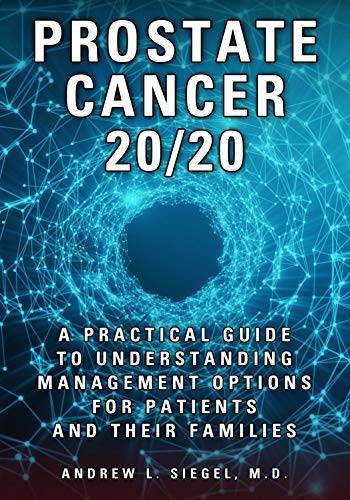

PROSTATE CANCER 20/20: A Practical Guide to Understanding Management Options for Patients and Their Families
by Andrew Siegel
PROSTATE CANCER 20/20 is a streamlined and accessible guide to understanding prostate cancer and its treatment options. Each case of prostate cancer is unique—necessitating an individualized approach—and the bewildering array of treatments available can confuse the patient and his loved ones grappling with how best to navigate through the formidable process of diagnosis and management. The advantages and disadvantages of each management option are reviewed in as impartial a means as is possible in order to empower the patient to be a participant in his therapeutic journey and enable him to choose the treatment that best suits him.
PROSTATE CANCER 20/20 reviews the unprecedented number of advances in addressing prostate cancer that have occurred over the last few years. These include improvements in screening and diagnostic testing, increasingly sophisticated imaging techniques, the development and refinement of genetic testing, the availability of numerous new medications, continued technical advances in surgical, radiation and focal therapies and the blossoming of the era of “active surveillance.”
Because most patients with prostate cancer have an excellent prognosis, the long-term consequences of the disease are oftentimes the side effects of treatment. PROSTATE CANCER 20/20 provides in-depth information on the most common complications following treatment—sexual dysfunction and urinary incontinence—conditions that can be successfully managed through a variety of means detailed within the book.
PROSTATE CANCER 20/20 reviews the unprecedented number of advances in addressing prostate cancer that have occurred over the last few years. These include improvements in screening and diagnostic testing, increasingly sophisticated imaging techniques, the development and refinement of genetic testing, the availability of numerous new medications, continued technical advances in surgical, radiation and focal therapies and the blossoming of the era of “active surveillance.”
Because most patients with prostate cancer have an excellent prognosis, the long-term consequences of the disease are oftentimes the side effects of treatment. PROSTATE CANCER 20/20 provides in-depth information on the most common complications following treatment—sexual dysfunction and urinary incontinence—conditions that can be successfully managed through a variety of means detailed within the book.

